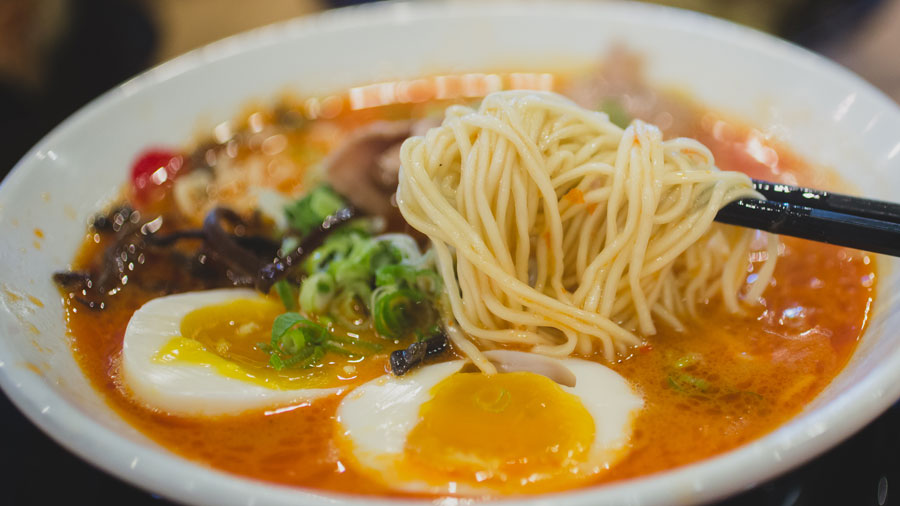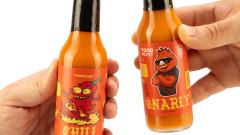Whistle Blowing Cultural Appropriation In Food Today Lacks Context And Nuance

I love cooking food from other cuisines. It’s one of my life passions to spend years learning the nuances, history, and traditions behind a cuisine, and then attempting to replicate it on my own. I never call what I make “authentic,” but it gives me a hint of what’s out there in the world of food that I have yet to try.
With this mentality in mind, the uptick in news about culturally appropriating restaurants has made me question my hobby a bit. Is it right for me to cook dishes of other cuisines when I’m not of that ethnicity and background? It certainly seems like that may be the case, as the keyboard warriors of food social media have pointed out to many restaurateurs that do the same.
I’ve always struggled to find what that right answer may be, but a Southern California churro shop owner posed with that same question recently has helped me identify a potential solution.
Jed Cartojano, owner of The Loop Churros and popular foodie Instagram account @dailyfoodfeed, spoke in depth on the subject on Foodbeast’s The Katchup podcast. Cartojano, a Filipino, had been in the midst of some controversy when he was accused of cultural appropriation, for being an Asian who owned a churro shop in Southern California.
“Kinda disappointing when it’s Asians running a churros joint,” the accuser wrote on Instagram. “Probably can’t even pronounce the rolling “R” in it right.”
Cartojano clapped back with ease, though, since churros have been a part of Filipino cuisine for nearly 500 years. In fact, churros arrived in both Mexico and the Philippines about the same time. Spain, where the churro originally hails from, colonized both countries in the early 15th century, and the churro has been integral to each cuisine since.
That point was made clear in Cartojano’s full discussion with podcast hosts Elie Ayrouth and Geoff Kutnick. In essence, not only was he not culturally appropriating churros, but he was also helping to open up Southern California to a world of Filipino-driven churro and dessert creations locals may not have experienced before.

Calling what Cartojano does “cultural appropriation” is far off base. That claim, however, has been used quite often in recent times to attack restaurants where the owner’s ethnic background may not match up with the cuisine. However, just because that is the case doesn’t mean that cultural appropriation is happening.
It’s hard to give the term “cultural appropriation” a clear definition, given how global trade, conquest, and migrations have caused the blending of cultures and cuisines countless times. The most flagrant instances, however, occur when someone attempts to profit off of another culture by exploiting others or proclaiming that they’re the authority on that cuisine.
A blatant example of what this phenomenon looks like comes from the infamous Kooks Burritos. A few years ago, a couple of female white entrepreneurs took handmade tortilla recipes from an abuelita, gave her no credit, then took over a Portland taco truck to sell their takes on breakfast burritos that used the exploited recipes. Kooks got such severe backlash from their insensitive interview where they revealed their backstory that they were forced to shut down within a few days.
More recently, Andrew Zimmern painted himself in an interview as the “savior of Chinese food” in the Midwest while promoting his new Chinese restaurant, The Lucky Cricket, in Minnesota. He drew sharp criticism for calling the local Chinese fare “horseshit” and saying that he could bring a more authentic take to the region, especially given the migrant families that were already there serving their traditional Chinese favorites. His words (and restaurant) fell flat on both accounts, based on reviews that have come in so far, and even Zimmern has regretted the words he said.

Those examples, however, could just as easily have been great stories on how to treat another food’s culture. If Zimmern hadn’t painted himself as the “savior of Chinese food” in the Midwest, and instead used his new restaurant as purely a showcase of the foods he fell in love with during his epicurean travels, then one would easily surmise that he wouldn’t have received any backlash in the first place. As long as appropriate tribute and attribution is given to the cuisine you’re cooking, there should be no reason for someone to come after you for “cultural appropriation.” Foodbeast’s own Reach Guinto describes that perfectly in his take on the subject below:
“If you’re confident in your ability to give proper respect to the origin cuisine, while also effectively infusing your own story and passion into it — with it of course being delicious — THEN YOU DO WHAT YOU WANT WHEN YOU POPPIN’. A good chef cooks from the soul and incorporates their experiences into their cuisine.”
This can be applied to what Cartojano does with The Loop Churros as well. He’s giving Southern California a representation of what Filipino-style churro desserts can be like, while adding his own creative visual flair and style that makes the treats pop off on Instagram. There’s always going to be the haters whenever a video shows Asians running a churro shop, but if you take the time to learn the true history of various foods, you can see what makes Cartojano’s concept so special and valued.
So, can we cook food from other cuisines? Absolutely, long as you give the appropriate credit, respect, understanding and attribution to those you learned from but still take the time to make it your own. For people like me that love to explore other cuisines, that means holding true to what we’ve discovered about the dishes we’re making, but being humble enough to credit others for the deliciousness that we’ve created for ourselves and those around us.






















